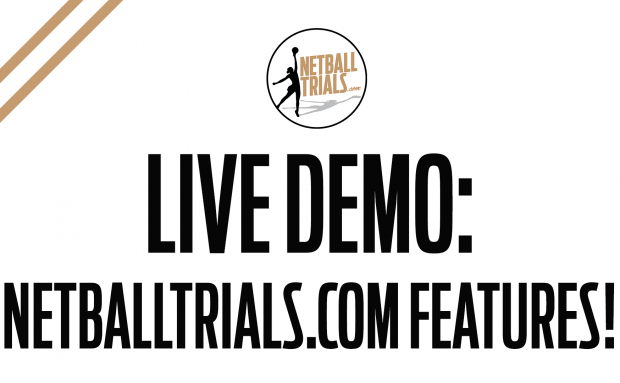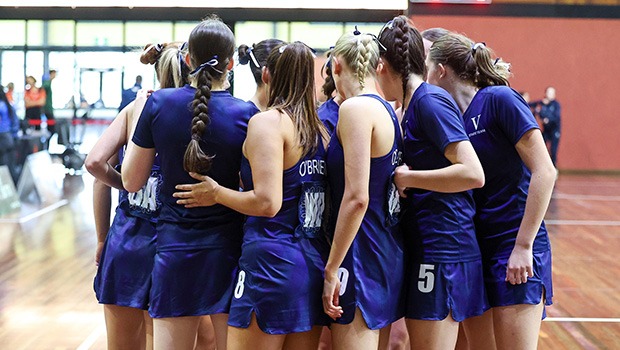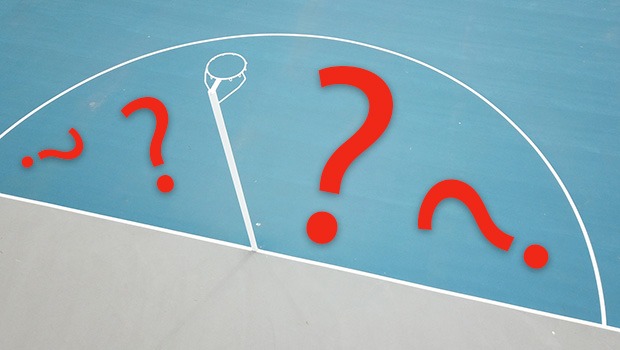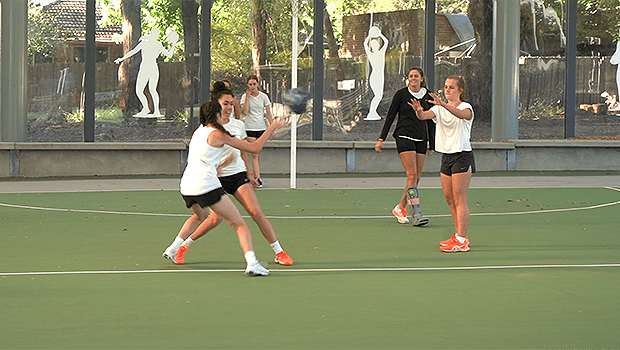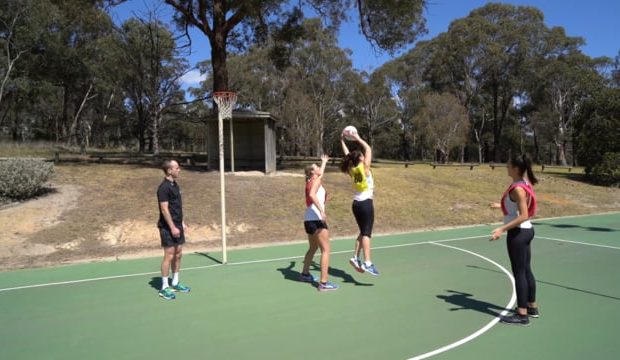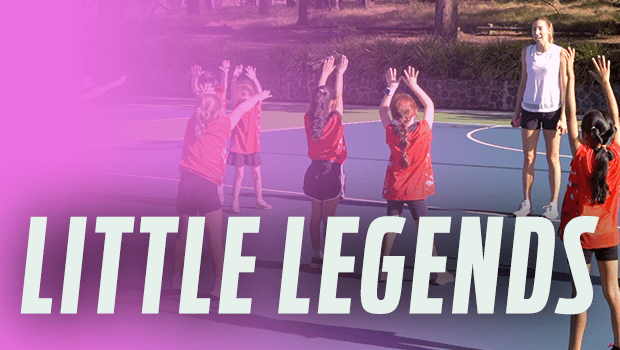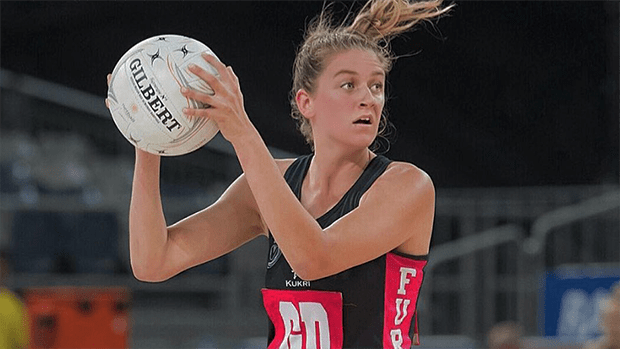
As netball coaches and selectors, choosing our defenders requires us to look for a set of skills that are specific to the defensive goal circle.
Here are our tips for some of the things you can look for as you select your defenders!
GOAL DEFENCE
ONE ON ONE DEFENCE TO DICTATE AND DELAY
If we had a dollar for every time we’d said at trials, “That GD just drops straight back to the circle and does nothing outside”, we could retire tomorrow! The tendency is to only worry about picking up the goal attack once they enter the goal circle, as that’s where they can score. But how much damage is that GA doing in helping their team to bring the ball to the circle edge, while they roam around unchecked? The best goal defences make tight one on one defence and accountability for their own player their first (and second) priority, so look for defenders who stick tight and use their body to dictate their opponent’s space and force them towards the sideline, delay their passage down the court and restrict their ability to get into the goal circle. Most players won’t be able to do it 100% of the time, but if they’re at least attempting to, you’ve got something you can work with.
POSITION TO CONTEST FIRST BALL
Next we like to see goal defences who are able to contest the first ball that their opponent attempts to drive for on a given passage of play. That could be a centre pass, a drive up the court in transition, or even a penalty that’s set outside the goal circle. In general, positioning for first ball pressure/contesting means the defender sitting slightly in front and to the inside of their opponent, forcing that player to drive towards the sideline and giving the defender the chance to cut off the ball. They won’t intercept every time, but that physical pressure can lead to other errors, or the opponent being shut out of the play completely. Telltale signs of defenders who aren’t positioning well to contest the first ball can include players who seem to set up hands over the ball A LOT – often because they haven’t defended the first ball and are trailing behind their opponent, so they wind up just jogging up and putting hands over the next pass.
RUNNING NETBALL TRIALS? SAVE HOURS WITH NETBALLTRIALS.COM!
BEING AN OPTION IN ATTACK
Just like their mates in wing defence, sadly the work doesn’t stop for goal defences once the ball is turned over. We want to see goal defences driving strongly out of defence to help their team bring the ball all the way down to the attacking transverse line and deliver the ball into the goal third, taking the pressure off the wing attack and goal attack. This means reacting quickly after a turnover and either passing the ball quickly to the best available option, or driving hard down court to open up space to receive the ball. Stronger goal defences have a great ability to read the play and avoid crowding space or cutting off a team mate’s drive, inserting themselves into the play at the right moment.
WORKING IN PARTNERSHIP
Partnering effectively with a goal keeper is a more advanced skill for goal defenders, but it’s one we should be looking for as players progress through the grades. Can you see the goal defence talking to their defensive team mate and working together to cover both goalers and set up chances to turn over the ball? Just as importantly, are they reacting to things the GK says, particularly as the GK is often the deepest player on the court and has the best vision of things in front of them? For younger players, look for simple things like the goal defence having the awareness to leave their opponent to cover the other goaler when there is rotation occurring in the circle, which helps to build pressure on the midcourt and create the potential for risky passes that can be tipped or intercepted.
GOAL KEEPER
ABILITY TO POSITION/REPOSITION
Is one ball swung across the court all it takes for a goal keeper to be caught out of position or on the body for an easy pass into the goal shooter? Or are they able to continually move and adjust to put themselves between the passer and the ball, or find a way to put doubt in the feeder’s mind? For every pass thrown in the attack end, the chance of an error or turnover increases, so look for goal keepers who consistently do the hard work to reposition to give themselves a good line to the ball, or force the attacking players to throw a risky pass.
READING THE PLAY
Eyes up! It’s one of the biggest things we try to train in our defenders, and it’s something we definitely want to see when selecting a goal keeper. While they’re repositioning in the goal circle, do they have their eyes up to make sure they always know where the ball is? This becomes critical as players move through the grades, as we want them to be able to recognise long, risky passes that they can leave their opponent to attempt to intercept. Look for GKs who instinctively spot opportunities to have a go at intercepting passes that were not intended for their direct opponent, as well as players who are constantly scanning the court in front of them so they know where to position themselves next.
REBOUNDING
Life as a defender can be hard. In many respects netball is an attacker’s game, so it never ceases to amaze us how many defenders don’t compete hard in the one part of the game where they have a decided advantage – rebounding. Assess goal keepers on their preparedness to turn and block out HARD after a shot, finding the body and preventing the goaler from making a run at the rebound. And look at how they attack the rebound – do they hold their position and then explode up to rip in the ball in front of them, giving the goaler no chance to make an attempt? Or do they turn and spectate, and then halfheartedly have a go while the goaler launches themselves at the loose ball? Players who WANT that rebound can be hard to come by, which leads us into our next tip….
COMPETITIVENESS
I couldn’t tell you how many times we’ve chosen a slightly shorter goal keeper over a taller one, purely because they were far more consistent in impacting the play. Often it comes down to competitiveness – how hard is each player prepared to work to avoid being beaten? Do they give up as soon as they’re slightly out of position, or will they do everything in their power to try and recover to get a hand to the ball? Do they allow the goal shooter to take uncontested balls, or do they compete hard the entire time, and have a physical presence in the circle? Remember, in a game that constant pressure can wear a goaler down, and is often enough to force some errors out of them.
WORKING IN PARTNERSHIP
Just like our tips for selecting goal defences, when choosing goal keepers for more advanced teams we should be looking for players who are able to work with those around them to build pressure as a team. Out of all the players in the defensive unit the goal keeper has the best vision of the court, so their ability to communicate with their teammates to let them know what’s happening and where to move is crucial. Look for GKs who talk to their defensive partners when required, and also react to directions they receive themselves.
Get your club ready for trials! Sign up now at www.netballtrials.com and save WEEKS of admin time:
![]() Create trial events + register players
Create trial events + register players ![]() Generate trial rounds automatically + get players on court evenly
Generate trial rounds automatically + get players on court evenly![]() Collect trial fees
Collect trial fees![]() Import lists of players into trials
Import lists of players into trials![]() Select your teams AND MUCH MORE!
Select your teams AND MUCH MORE!
